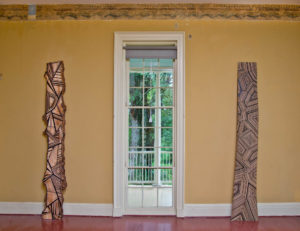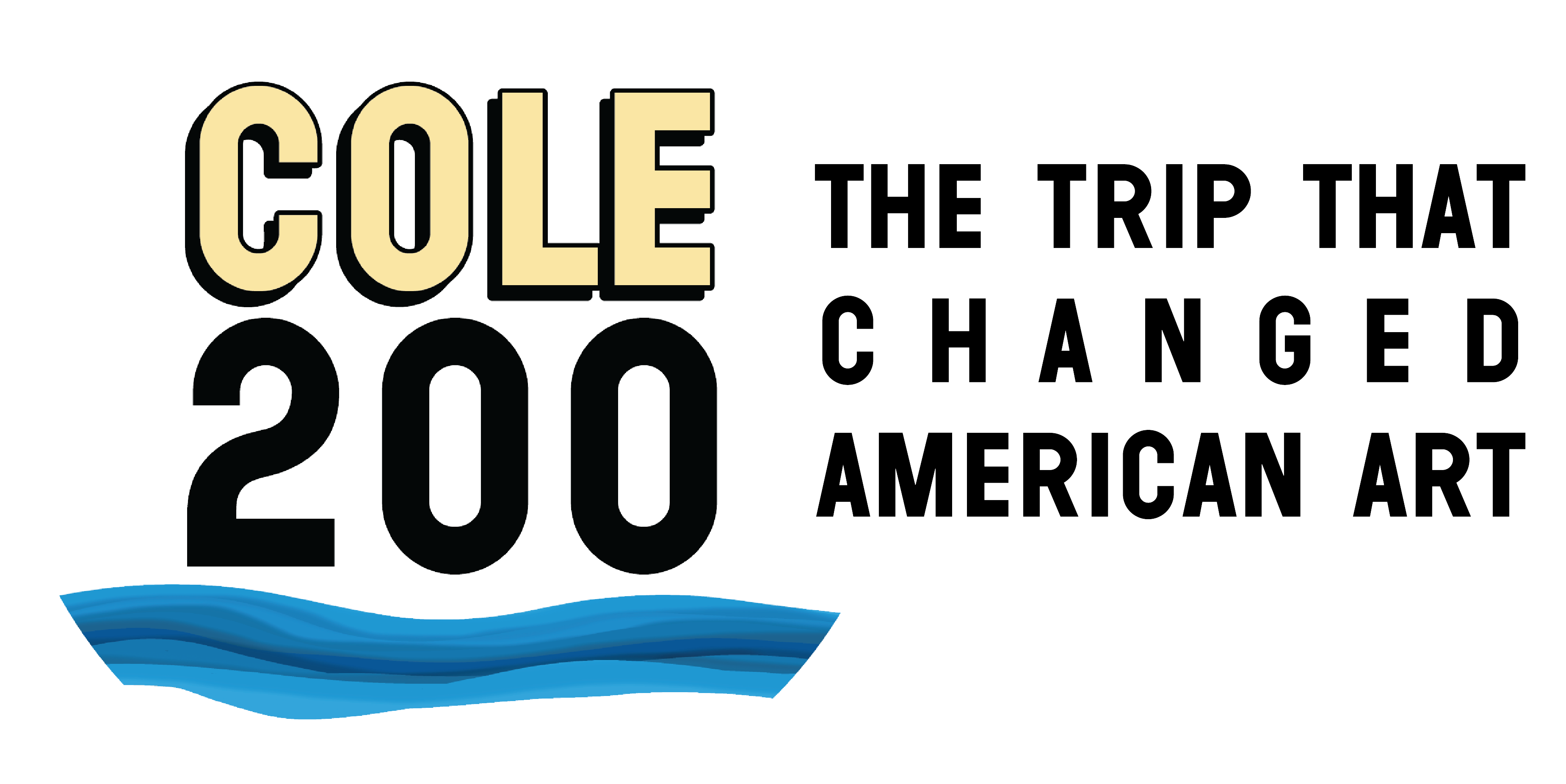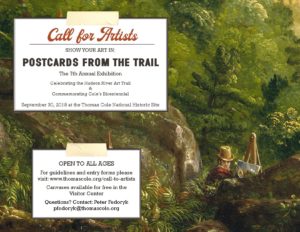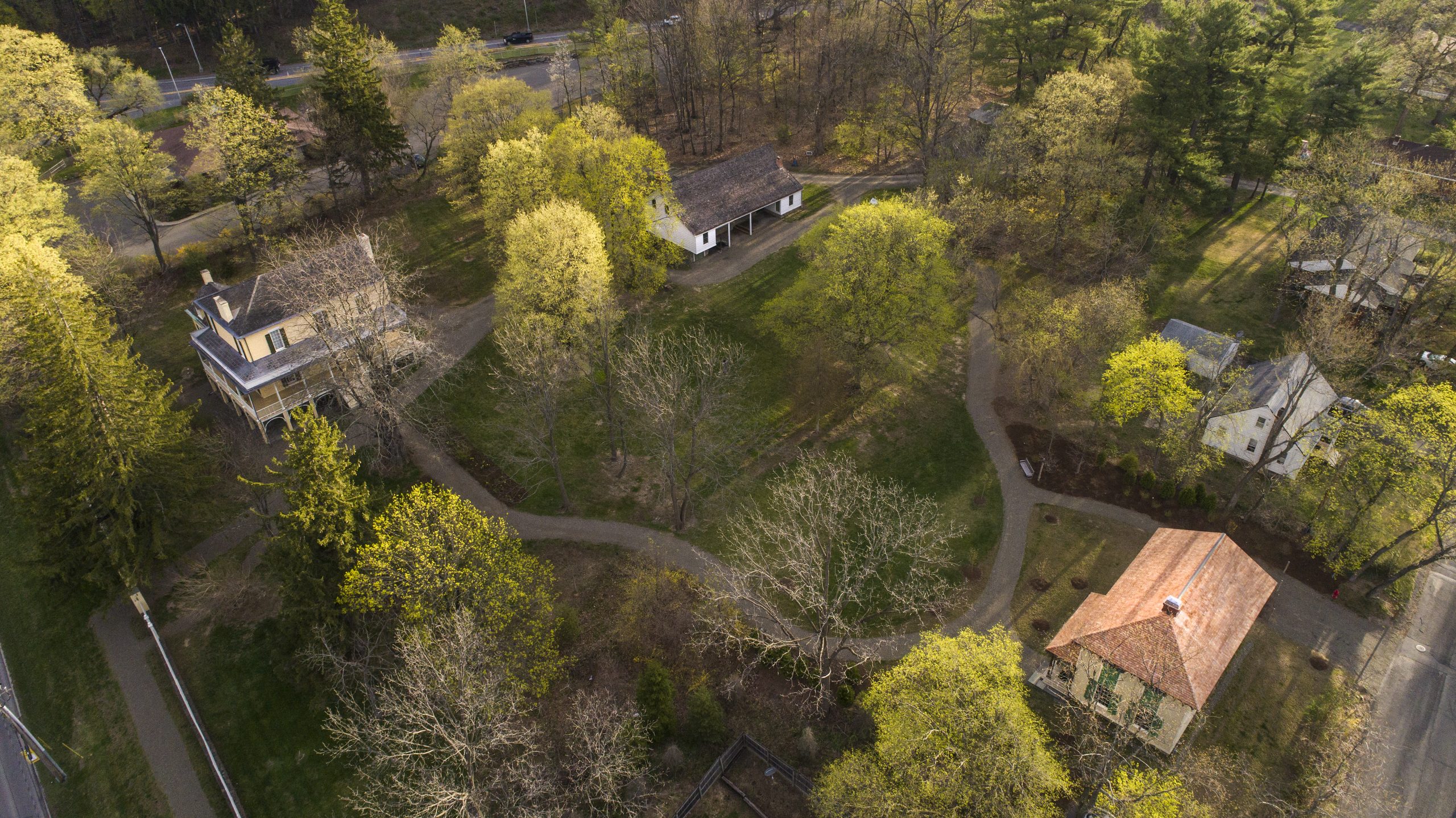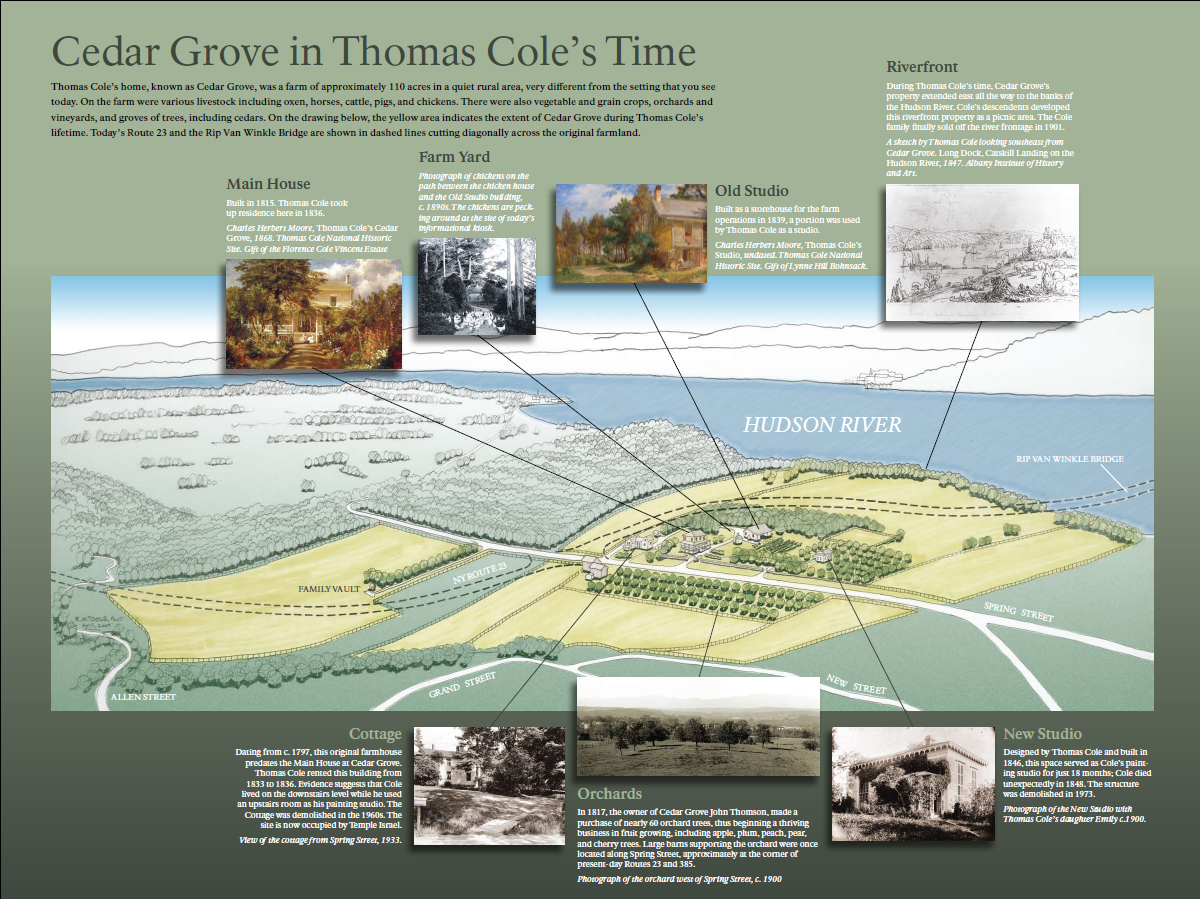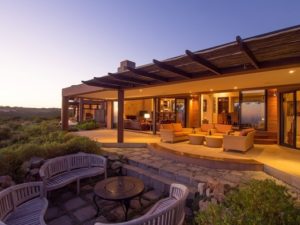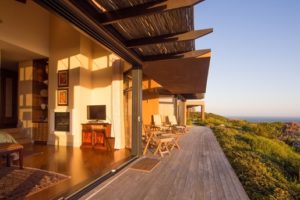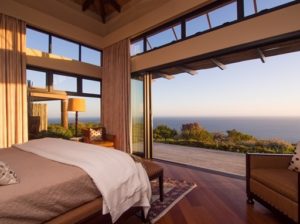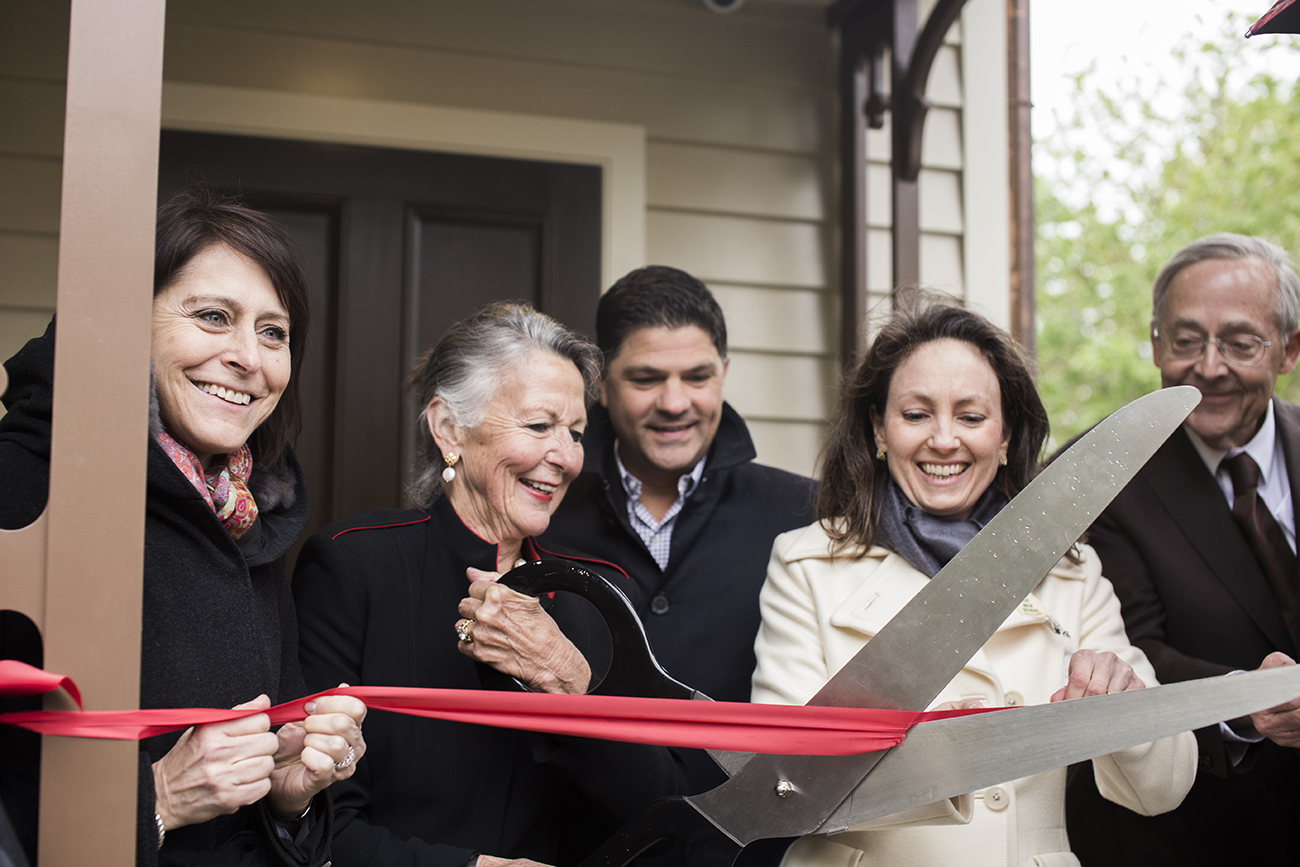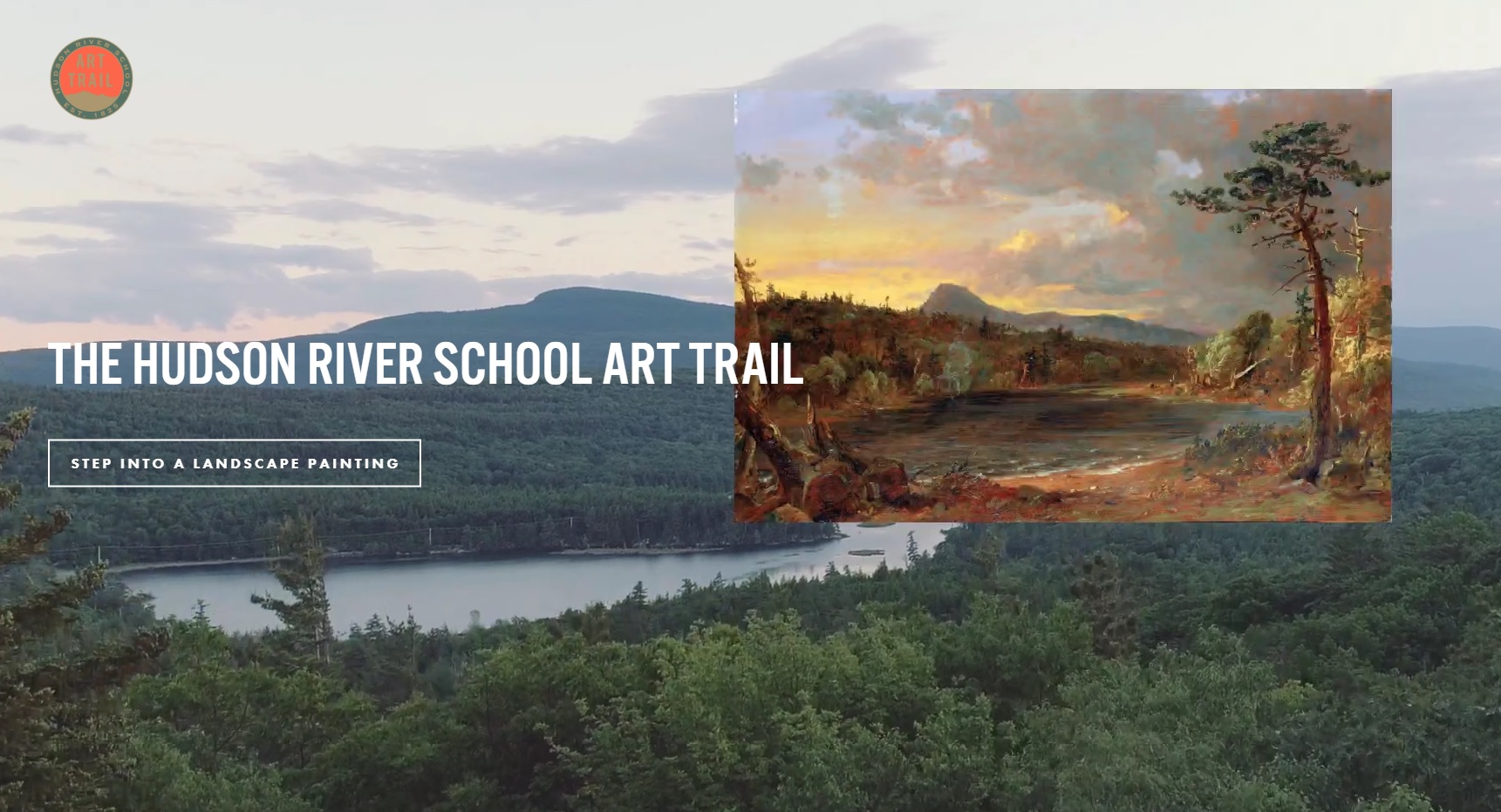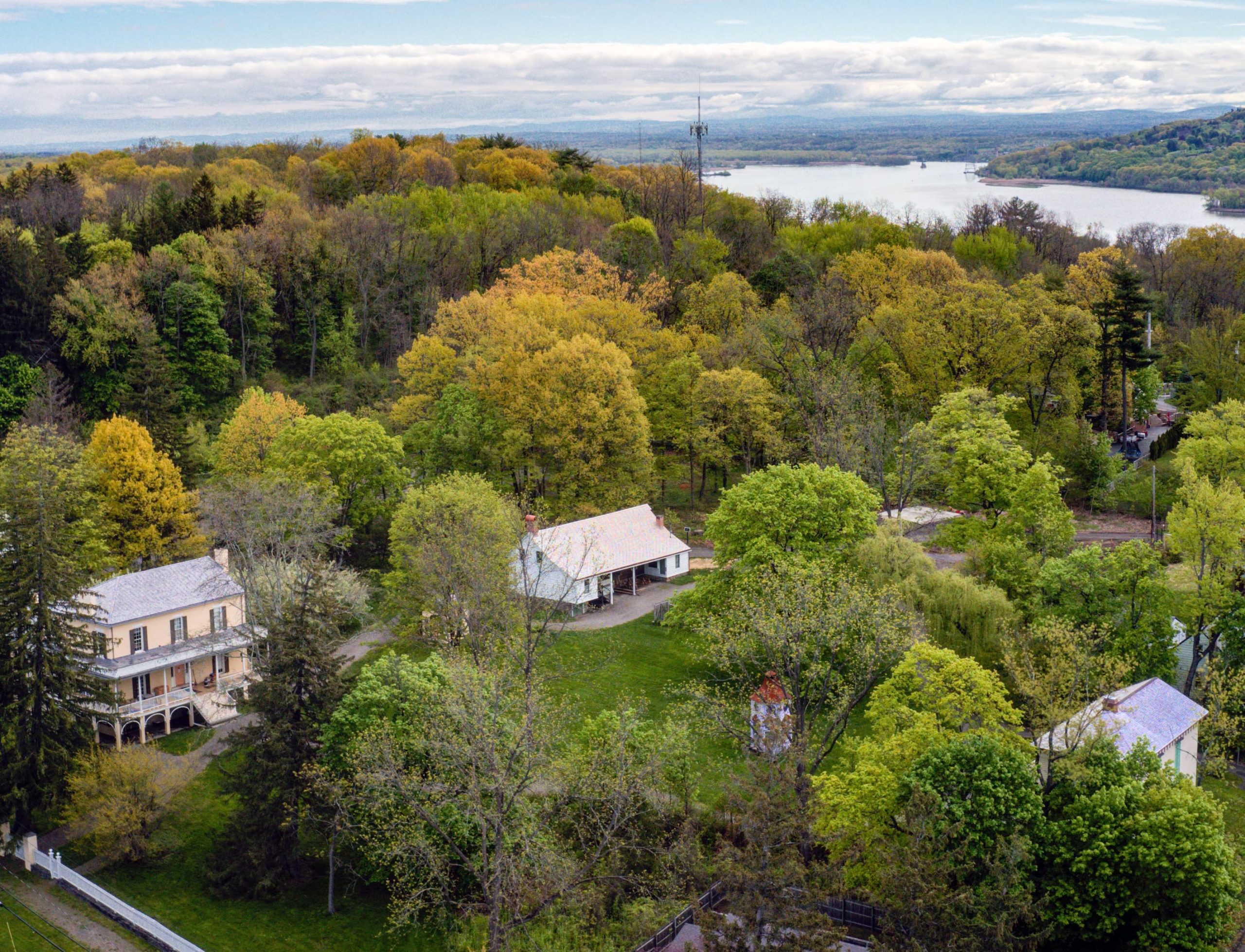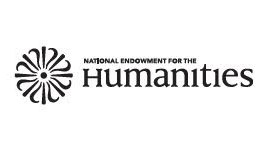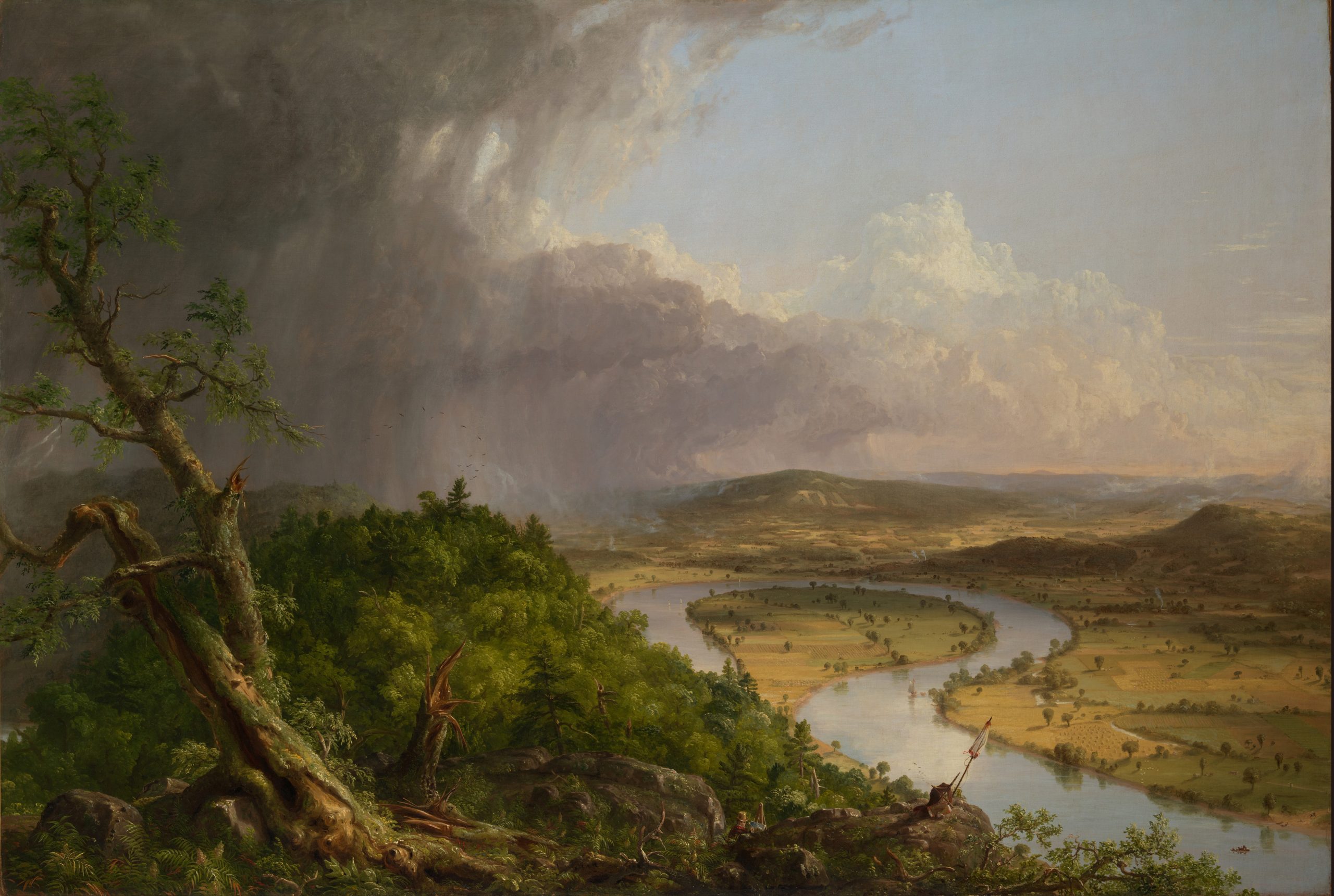Below are several suggested itineraries for exploring the Hudson River School Art Trail – the driving and walking trail to the views that are depicted in some of the best known 19th-century landscape paintings. If you have a smartphone or tablet, you can bring all of the paintings along with you and have the fun of comparing the painted and actual views by visiting this site: www.hudsonriverschool.org. Also, from May through October, you can join a guided hike that departs from the Thomas Cole Historic Site. See the current schedule of hikes and other programs.
Enjoy your journey.
One-Day Highlights Tour
Sites 1, 2, 4 and 5.
See some of the most spectacular sites, all in one day! Start at the #1 site on the Trail, the Thomas Cole National Historic Site at 9:30 am, watch the introductory film about the Hudson River School, and take the 10 am tour of the place where American art began. Next, head to Olana, site #2 on the Trail, which is less than 3 miles away, and brace yourself for one of the most beautiful views in all of North America. Take the 11:30 am tour (reserve in advance by calling (518) 828-0135) of the magnificent home of the artist Frederic Church, shop for an artistic souvenir, and then head to lunch in nearby Hudson or Catskill. After lunch, drive to site #4 on the Trail for a view of majestic Kaaterskill Clove. Leave your car there and take the 1-mile hike up to Kaaterskill Falls.
“Into the Wild” Weekend
Day 1: Sites 12, 13, 14 and 2
Day 2: Sites 1, 4, 5 and 7
Escape to nature and hike to some of the most glorious views on the East Coast. Start at the Mohonk Mountain House, a resort that dates back to the 19th-century. Ask for a trail map at the gate house and explore the beautifully maintained trails with 100-mile views of the region, encompassing Trail sites #12, 13 and 14. Enjoy an outdoor barbecue for lunch at Mohonk’s The Granary overlooking New Paltz’s Lake Mohonk. Drive approximately one hour to Olana, site #2 on the Trail, and brace yourself for one of the most beautiful views in all of North America. Take the guided tour (reserve in advance by calling (518) 828-0135) of the magnificent home of the artist Frederic Church, shop for an artistic souvenir, and then head to dinner in nearby Hudson or Catskill, both of which have Bed & Breakfasts for your overnight stay. The next day, start at the #1 site on the Trail, the Thomas Cole National Historic Site, watch the introductory film about the Hudson River School, and take the guided tour of the place where American art began. Head to lunch on Catskill’s historic Main Street or at The Point restaurant on the banks of the Hudson River, then drive up into the 300,000-acre Catskill Forest Preserve. Park and enjoy Trail site #4 right from the parking lot. If you have time, hike the one mile trek up to Kaaterskill Falls, a double waterfall that combined reaches 260 feet, the highest waterfall in New York State! Compare the view to Thomas Cole’s famous 1826 painting of the same, then make your way back down the trail to the sights and sounds of tumbling waters all the way. Drive around into the North-South Lake State Park, get a trail map at the gate house, and start your two-hour round-trip hike along the dizzying heights of the Escarpment Trail, with views that encompass the length of the Hudson River and three states. Return the way you came and reward yourself with a hearty dinner in nearby Hunter or Tannersville.
Fun Family Outing
Sites 4, 6 and 8
Your first step into the colorful and magical world of the Hudson River School is at the Thomas Cole National Historic Site in Catskill, where your Art Trail Passport awaits. Pick up your passports at the gift shop located in the visitor center, watch a short intro film about the Hudson River School and, with passport and pencils in hand, journey into the artistic heart of the Catskills. Be sure to stop at nearby Catskill Country Store, located just about one mile from the Thomas Cole Site at 430 Main Street, Catskill, or at Natalie’s Nook which is also on Main Street, to grab sandwiches, salads and more for a picnic on the trail.
From here, drive along Route 23A until you cross over a large waterfall and come to a small parking lot on your left, located approximately 15 miles from Catskill. Park and walk to the far side of the lot where you can see a view through Kaaterskill Clove, site #4. There you will find an exhibit panel with several paintings of the same view reproduced there. Using your passports and a pencil, you can make a rubbing of the metal plaque that is attached to the sign.
If you have older children and if you have enough time, leave your car right there and walk back along Route 23A to the trailhead to Kaaterskill Falls, site #5. As the largest cascading waterfall in New York State, it is little wonder Cole and many of his disciples stopped here to capture on canvas their first impressions of the Catskills. The one mile hike into the falls offers scenic beauty, plenty of opportunity for sketching on your own, and a well-marked trail that entices with the smells of the forest and distant thunder of the majestic waterfall. However, it is steep in places and not appropriate for small children. Find a quiet spot at the base of the falls and enjoy your picnic or simply relax while the rush of the falls creates its own music all around you. At the end of your hike, stop by the Art Trail Marker to complete the passport rubbing before heading to site #6, North-South Lake.
The North-South Lake Campground is a popular destination that offers swimming, boating and fishing, perfect for a day of family fun. A small day-use fee is required at the entrance gate where you should request a map of the campground and nearby hiking trails. Drive to the edge of the lake, site #6, and record the sights and sounds of the journey in your passport, utilizing one of Thomas Cole’s own painting techniques. Cole captured the scenic beauty in little reminders and sketches, making notes about the color of flowers, trees and the sky before returning to his studio to paint.
Enjoy the family-friendly atmosphere of North-South Lake, go for a swim, enjoy your picnic if you have not already done so, and then head to Site #8 on the Art Trail, the former location of the Catskill Mountain House. The trailhead is located at the campground and follows the Catskill Escarpment Trail to a ledge rising 1,600 feet above the Hudson River Valley. Complete your rubbing and enjoy the inspiring view that on a clear day encompasses five states and remains almost unchanged since Cole’s time.
Three-Day Grand Tour
Day 1: Site 17
Day 2: Sites 15, 2 and 9
Day 3: Sites 1, 4 and 5
Day 1:
The grand tour of the Hudson River Art Trail offers an in-depth exploration of the places that inspired America’s first artistic style. Start at site #17, the charming home and studio of painter Jasper Cropsey. Take a guided tour of both Cropsey’s home and studio, known as “Ever Rest,” by appointment on weekday mornings. To reserve a tour, phone (914) 478-1372.
Take a break and walk or drive the mile to nearby MacEchron Waterfront Park on the Hudson River. Picnic or stop at any one of the nearby restaurants and enjoy the inspiring views before heading back to site #17 for a tour though the museum’s collection of Crospey originals. The museum, shown by appointment only, houses a large collection of Cropsey paintings. See some of the best views and compare Cropsey’s painting Ravine at Hastings to the exact spot the artist captured.
Head into the charming town of Rhinebeck and continue the search for your own Hudson Valley treasures in antique shops, find art supplies and jewelry, as well as clothing shops and outdoor gear. Enjoy an overnight stay at the Beekman Arms, a stately inn located in the heart of the historic village. Reminisce about the day’s delights in front of a roaring fire or relax outside on the stone patio before dinner at The Tavern at the Beekman Arms.
Day 2:
Day two of the grand tour will find you following in the footsteps of the Vanderbilts and German-born Hudson River School painter Johann Hermann Carmiencke. The painter, who had already achieved success in Denmark, emigrated to the United States when war broke out between Germany and Denmark in the mid-1800s. One of Carmiencke’s most famous paintings, Hyde Park: View Up the Hudson, was painted from what would become the west portico and grounds of the Vanderbilt Mansion National Historic Site, stop #15 on the Art Trail. For $8 per person, enjoy a guided tour of the house and grounds year-round, and enjoy Carmiencke’s vista from the great lawns. Children 15 years and younger can take the tour for free.
After touring site #15, head to site #2, Olana State Historic Site – the former home of the prolific Frederic Edwin Church, one of the Hudson River School’s most celebrated painters. Find the medallion in the visitor center and make your rubbing before heading to site #9, Mount Merino and the Catskills, on the banks of the Hudson River in Promenade Park. Located at the foot of Warren Street just a few miles from Olana, the scenic vista was captured by Sanford Robinson Gifford in 1864 in his painting titled, South Bay, on the Hudson, Near Hudson, New York.
Enjoy wandering the cosmopolitan, yet charming city of Hudson for legendary antique shopping and great restaurants for dinner before checking in for the night at one of the many bed and breakfasts.
Day 3:
Day three of the grand tour will find you visiting the home of Thomas Cole and touring along some of the first vistas captured by Hudson River School painters. Begin the day with a visit to Site #1, the Thomas Cole National Historic Site in Catskill, a 5-mile drive from the City of Hudson that takes you over the beautiful Rip Van Winkle Bridge. Open your Art Trail passport and make a rubbing of the medallion at the Thomas Cole site, enjoy the scenic vista as well as tours through both Cole’s house and his studio.
Take a walk over the Rip Van Winkle Bridge, which is less than a mile’s walk or drive from the Thomas Cole site, and enjoy the stirring views of the Hudson River and the scenic riverbank. Head back toward Catskill, and stop at Frank Guido’s Port of Call and enjoy a casual lunch along the Hudson River waterfront or visit Catskill’s historic Main Street for a quick bite.
Traveling from the river to the mountains, head to site #4, Kaaterskill Clove. Located on Route 23A in Palenville, the 10-mile drive from Catskill to the trailhead is dotted with scenic views. Captured by Asher B. Durand in 1866 and many other artists before and since, the Clove remains a stunning and well-preserved landscape. Cloves, which are clefts in the mountains, are distinctive to the Catskills, and were often painted by Hudson River School artists. Don’t forget to do the medallion rubbing at site #4.
From Kaaterskill Clove, head to site #5, Kaaterskill Falls – the largest cascading waterfall in New York State and your final stop on the grand tour. Painted first by Thomas Cole in 1826, and then by his many followers, Kaaterskill Falls remains a majestic and inspiring landmark destination for all who travel in Thomas Cole’s footsteps. Do the rubbing and then head for home. You have completed the three-day grand tour.
